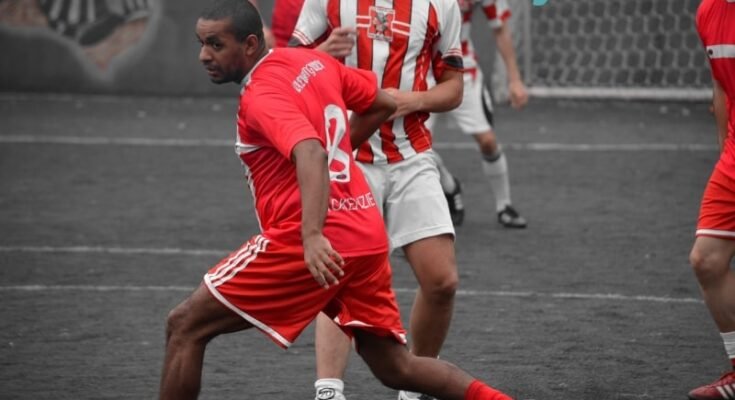Introduction
The Metrostars, a well-known name in American soccer history, have had a fascinating evolution not just in their gameplay but also in their kits. The team rebranded as the New York Red Bulls and began its journey in Major League Soccer (MLS) as the New York/New Jersey Metrostars.
Their kits have become a part of soccer heritage, reflecting the team’s identity and the shifting trends in soccer fashion over the years. This article delves into the Metrostars kit history, exploring the changes, the significance of different designs, and their impact on fans.
A Brief Metrostars Kit History
Before diving into the evolution of the kits, it’s essential to understand the origins of the Metrostars. Founded in 1996 as part of MLS’s inaugural season, the team was a significant part of the league’s early years. They represented the New York metropolitan area and were named after a combination of the cities they aimed to represent – New York and New Jersey.
Although the team didn’t succeed immediately in the league, they developed a loyal fan base. One of the ways the team stayed connected to its fans was through its kits, which always sparked discussion and interest.
Early Kit Designs (1996-1999)
The Original Look (1996-1997)
The Metrostars Kit History was a statement piece. The design featured bold black and red stripes, paying homage to iconic international soccer jerseys.
The striking black and red combination quickly became synonymous with the Metrostars’ aggressive playstyle. The Adidas logo and sponsor “Nike” across the chest completed the look, emphasizing the modern soccer aesthetics of the 90s.
This kit also had a unique colour pattern for home and away games. While the home kit focused on the black and red stripes, the away kit was a more straightforward white with red accents, representing a clean and streamlined approach, perfect for their on-the-road battles.
1998-1999: Embracing Simplicity
By the end of the 90s, the MetroStars shifted towards a more minimalistic approach. In 1998, the black and red stripes became subtler, and the overall design moved towards solid blocks of colour.
The away kit was predominantly white, and the black and red stripes were present in a more understated manner.
Despite the simplification, the iconic colours stayed, and the kits maintained their strong identity. This era was when MLS teams were experimenting with simpler designs, and the Metrostars followed suit.
The Early 2000s: Transitional Period (2000-2005)
The early 2000s marked a transitional period for the Metrostars. This was reflected in their kits, which evolved in design and branding.
2000-2002: Reintroducing Boldness
As the team matured, so did its kits. Between 2000 and 2002, the Metrostars introduced a kit that brought back the boldness of the original design.
The colours were vibrant, with the black and red stripes returning in a more modern and sleek style. The kits also featured sponsor logos more prominently, aligning with international soccer trends.
One of the key features during this period was the addition of gold accents in some kits, symbolizing the team’s growing aspirations in the league.
2003-2005: Towards a New Identity
During these years, the kits started to feature cleaner and sharper designs, signalling the team’s shift toward a more corporate and streamlined identity.
The jerseys became more tailored, focusing less on stripes and solid colours. These designs paved the way for the team’s eventual rebranding.
The Rebranding: New York Red Bulls (2006 Onwards)
The most significant change in Metrostars kit history came in 2006 when the team was bought by the energy drink company Red Bull and rebranded as the New York Red Bulls.
With the new name came a new identity, and the kits reflected this drastic transformation.
2006: The First Red Bull Kit
The first Red Bulls kit completely differed from anything the Metrostars had worn. Gone were the iconic black and red stripes; instead, the team now sported white kits with red and yellow accents, representing the Red Bull brand colours. The kit was a clear departure from the past and symbolized a new era for the team.
Despite the rebranding, fans of the original Metrostars are still deeply attached to the older kits, viewing them as a symbol of the team’s humble beginnings and early struggles.
Post-2006: Red Bull Influence
Since the rebranding, the kits have maintained a solid connection to the Red Bull identity, with the white and red colour scheme dominating the designs.
However, there have been occasional nods to the Metrostars’ past, particularly in throwback kits and unique anniversary designs.
The Evolution of Kit Technology
Over the years, not only did the designs evolve, but the technology used in making soccer kits also changed dramatically.
In the early days, kits were heavier and made of basic polyester. By the early 2000s, as sportswear brands began to innovate, the Metrostars kits became lighter, more breathable, and better suited for athletes.
Adidas, the team’s kit manufacturer for many years, introduced moisture-wicking technology, which helped players stay dry during matches.
This technology became a crucial aspect of modern kits, ensuring players could perform at their best.
Impact on Fans and Popular Culture
The Metrostars kits, especially the original black and red designs, have become a part of MLS folklore.
These jerseys are still cherished by fans, and many can be seen wearing retro versions at New York Red Bulls games.
The kits represent a time when MLS was still finding its feet, and the Metrostars were a vital part of the league’s identity.
In popular culture, these kits have also made appearances, with some being worn by collectors and even celebrities who appreciate their place in American soccer history.
FAQs about Metrostars Kit History
1. What was the significance of the Metrostars’ black and red stripes?
The black and red stripes were a bold design choice that reflected the team’s identity and aggressive playing style. The colours also made the Metrostars kits stand out in the early days of MLS.
2. Why did the Metrostars rebrand to the New York Red Bulls?
The rebranding occurred in 2006 after the team was bought by the Red Bull energy drink company. The rebranding was part of a larger marketing strategy by Red Bull to expand its brand presence in global sports.
3. Are Metrostars kits still available for purchase?
Yes, many retro Metrostars kits are available through collectors or speciality soccer merchandise retailers. Some fans also create replica kits to keep the Metrostars’ legacy alive.
4. How did the Red Bulls kits differ from the original Metrostars kits?
The Red Bulls kits feature a white and red colour scheme, aligning with the Red Bull brand, while the Metrostars kits were known for their black and red stripes. The Red Bulls kits also featured more corporate branding elements.
5. Have the New York Red Bulls ever paid tribute to the original Metrostars kits history?
Yes, on several occasions, the New York Red Bulls have worn special throwback kits that pay homage to the original Metrostars design, especially during anniversary celebrations.
Conclusion about Metrostars Kit History
The Metrostars kit history is a journey through soccer’s changing trends, technological advancements, and the evolution of a team’s identity. From the bold black and red stripes to the modern designs under the New York Red Bulls, the kits tell a story of growth, transition, and enduring legacy. Fans continue to hold the Metrostars jerseys close to their hearts, symbolizing the team’s impact on the early days of MLS and American soccer.


